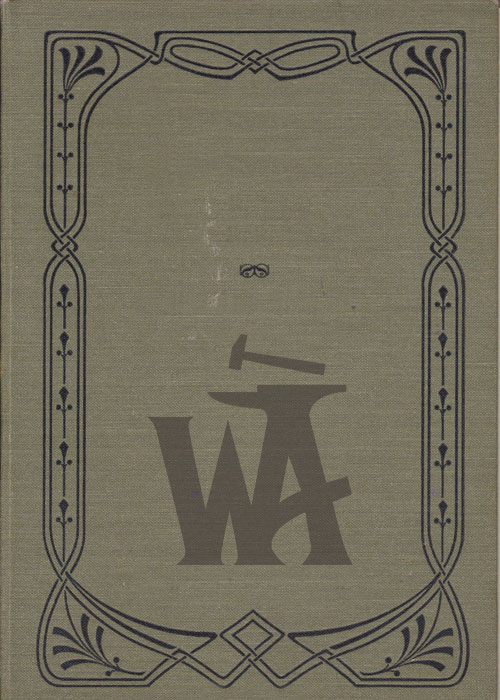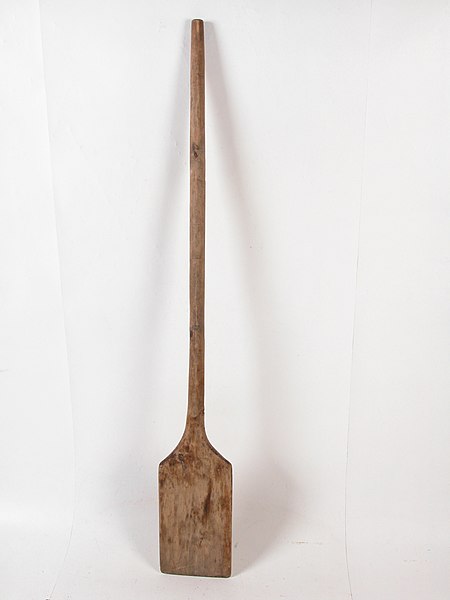Baker
Someone who bakes bread for a living.
Origin
8,000 BCE. What is now the fertile crescent of Modern Iraq [1][13].
Status
Bread is mainly produced in factories using Computer-Aided Manufacturing (CAM), however, the profession that deals with machines is unlikely to be called a baker.
Domestic technologies have been made for home baking, for the perfect bread loaf each time. The profession practised in its own building still exists but to a lesser extent. Bakers can be seen in modern supermarkets.
What The Profession Involves
Historically, the profession of baker only baked bread. It would be much later in human history when they would start be baking pastries like they do today. While bread has lasted from well before recorded history, we don’t know what the profession was called back then, if it even existed.
Pre-History
Before humanity settled down and started agriculture, humans were hunter-gatherers. A common food item was to make a gruel which, when left out, would bubble [1].
Humanity at the time had a choice, whether to make fluffy food that gives energy when eaten or to wait longer and make a drink that would make them feel good. Due to the advent of bread and beer, nomadic life declined and human settlements started.
Greco-Roman
This technology, (what we would call braking sourdough), spread to Greece in the 5th and 6th centuries BCE. Sourdough was being made in communal ovens [2]. The same was true for the Romans, who took bread seriously. As one famous Roman poet, Juvenal said, Give them bread and circuses and they will never revolt. Meaning that if you kept a population fed and entertained, could distract the citizenry with the entertainment and them being fed. If you were the government of the day.
Middle Ages
In the Middle Ages, bakers would wake up early in the morning to start baking. As this was the case, they would live in the same building as their bakery [3]. These bakeries would be central to the village or town, to make it accessible to as many people as possible [3]. In some villages, the baker would have an oven that was bigger and already hot, people would bring other things that could be cooked in the bakers’ oven [3]. These could be casseroles or roasting meat [3].
Bakers made their bread by putting wood in the space where the bread would go, and by setting the wood on fire. When there were ashes in the oven, the baker raked the ashes and the fire quickly out, using a rooker [4] leaving the fire outside the oven. In later time periods, moistened the baking surface with water [4]. The bread would then be loaded into the oven with a peel, a long stick with a spatula-like end without holes [4]. The lid would then be closed on the oven for a set amount of time, after which, the bread would be collected and sold.
Some bread ovens had the heat source at the bottom and separated from where the bread would be baked. In this case, the fire would heat the stone surface. This was the exception to the rule at the time, however, it wasn't until much later that ovens that separated the fire from the bread, became popular.
A Peel by The National Museum in Tartu, Estonia.
Baker Guilds
A Guild in Medieval London was established in 1155 [5]. Known as The Worshipful Company of Bakers, it was London’s second recorded guild [5], the first being The Worshipful Company of Weavers [14]. In the beginning, if a baker was tried for a crime, it would be the guild, that would try them not the court system.
From the incorporation of London in 1191 the guild received the power to enforce regulation on the size and weight of bread. This remained enforced until 1815 [3]. The punishment, if your bread was not baked to specification, was to be pilloried and banned from baking for life.
The Guild retains its old Guildhall location, which contains a courthouse, since 1506. [3]
In 1307 the guild broke into two, The Brown Bakers and The White Bakers, named by the type of bread they baked. The White Bakers were given the royal charter in 1509, while The Brown Bakers were given theirs in 1621 [3]. The difference was probably because of the viewpoint that white bread was for the wealthy, while the other less popular brown bread was seen to be for the poor. In 1645, the two separate guilds came back together. A new charter was made in 1686 which is still used today.
Bakers were known to cheat their customers, which is where the term, bakers’ dozen, may have come from. If one of the loaves were too small, the baker could supplement a piece of the 13th to make up for the loss in bread [3]. At this time, they could not be banned but rather flogged [3].
Let Them Eat Cake!
Due to the vast difference between the rich and poor, the French revolution sparked in 1789, from this we get the popular myth that Marie Antoinette, said in a famine let them eat cake, and this is what laughed the fight. The cake is more likely to be translated to brioche [1] and is not cake at all. It is dubious if she actually said this as it is part of a popular story.
Victorian Era
At the advent of industrialisation, bread was required in vast quantities due to the population increase, profit was high on the agenda [12] meaning using cheaper ingredients or parts and selling the product at high-profit margins was highly popular. Bread did not escape this fate and was altered too, with Alum, a mixture of Aluminium and Potassium, which is a whitening agent [12].
Alum is not harmful at the right doses. The chemical was used as a whitening agent and was used by the miller to make the flour appear to be more white. And by the baker to make their bread more appealing to the Victorian housewife [12]. As the Alum made the bread retain moisture making the bread feel more substantial [12]. This addition made by the miller and the baker upped the dosage so that it was close to doing some harm.
The other popular alterations are chalk, iron sulphate and plaster of Paris. These alterations were done because of profits. But also because of disconnection between the miller, baker and retailer who in the past, would have been the same person [12]. but are now their own separate processes as they never saw the customer they thought they could get away with it. It wasn’t until much later in the victorian period under consumer pressures that this was abolished [12] and was labelled as pure items [12]. As the consumer couldn’t tell the difference between the safe kind and the altered food item.
Contemporary Times
In 1928, in the United States bread was first sliced not horizontally but vertically and was sold as such [6]. A year later wholemeal flour was discovered to be healthier regardless of the public’s favourite white bread [6]. In 1941 bread had milk added to prevent rickets [6], an illness because of the deficiency in Vitamin D.
In 1963 the British Government passed a law, which told bakers what they could put into bread legally [7].
Extra Points
Egyptian Bread
In around 5000 BCE in Egypt, the Egyptians learnt of two ways of breadmaking. One was to skim some of the beer to put with the flour, or to save a part of the risen dough for the next batch [1], a sourdough mixture.
The most widely found thing in slave quarters as part of an archaeological dig into Ancient Egyptian history was bread-making bowls [1]. As part of their exodus by Hebrews [1]. They couldn’t wait for their bread to leaven, as they left their sourdough starters behind, so they had to make crackers instead [1].
Cereals
The bread was produced with many different kinds of cereal or grains. Many of which were what was available at the time [15]. For poor customers, bread was produced with a whole range of cereals. This type of bread was not white and was brown or even granary.
As with the numerous wheat failures of, the 1630s, 1690s, the 1740s and 1790s. Bread produced in the UK, which was bought by the wealthy and thus white, was imported from either continental Europe or North America.
As part of the wheat failures, in 1804 [15] a book; The Treatise On The Art Of Breadmaking by Abraham Edlin [16] is published in the US. Who goes into the bakers’ trade of the time [15], as well as talking about wheat substitutes. Abraham talks about peas and says they don’t work but that oats and corn do, which are still used today in breadmaking. Although with varying in popularity depending on where it is found [15]. Oddly Abraham goes into talking about using potatoes or turnips, which could be used too [15]. Of course, the bread still needs to have some grain if potatoes are used.
When potatoes are used the bread looks like white bread with little difference to the taste.
Empire!
In the 16th century, the Portuguese controlled the spice trade [18]. In the early part of the 17th century, the British and the dutch came on board with the spice trade as well, for challenging their domination of the trade [18].
In 1600 the British started their East India Company, which lasts today [25]. Two years later the Dutch established their version which lasted from 1602 to 1799 [24]. As the British and the Dutch ships were better equipped and more technologically advanced. They became to take domination away from the Portuguese.
As expected with two major powers, military conflicts occur between the Dutch and the British. One of these was the conquest of the Banda Islands (1609 - 1621) [26], this was later called The Nutmeg Wars [18]. The conflict results in the Dutch winning but having most of the islands and the British having a small island called Run [18]. 4.535kg (originally 10lbs) of nutmeg from the island could be bought for less than a penny and sold back in England for two pounds [18]. This is equivalent to £270 in 2020 and could either get you a cow [18] or 40 days from a skilled labourer [18].
From the amount of worth from just 4.535kgs of nutmeg buys a large equivalency in labour or a cow. It is not hard to see why spices are the time were not an everyday item. From this, the profession of Pasteler or Pastrychef was born and had been for at least 2 centuries in Europe.
The Dutch in the late 17th century tried to gain control of all the islands, it wasn’t until 1667, that they managed it, from the Treaty of Breda [27][28], in which England gives up the claim for Run for a small fur trapping island. This little known island which has a settlement changes its name to New York in 1664 [29].
In 1770, the french successfully smuggled nutmeg and planted it across; Madagascar, Mauritius, The Seychelles and Zanzibar. The aim was to cultivate it in areas that were not Dutch owned.
In the 18th century, due to the wide cultivation and the lack of interest in spices. To make more profits at this time meant that someone trading with Asia would actually bring back silks and textiles more than just spices. In the 19th and 20th centuries, this continued to the extent that the spices became everyday items.
In the 1920s pastries became part of a baker's inventory [31], this, in the Second World War, ended until the later part of the 40s or into the 50s.
Importance of the Profession
The baker had to wake up earlier than everyone else to make the dough to make bread as people wanted their bread in the morning not in the afternoon [17]. If there was not enough bread or it was too expensive, there would be bread riots [17]. These riots happened in the 18th century as well as in North America, especially in the American Civil War (1861 - 1865) [17].
Education
When the profession was placed with the guilds, the profession required many years of being an apprentice [8]. In more modern times needed to be qualified through the education system or to have an apprenticeship [9].
Derivatives and Conglomerates
Derivatives
A Sugar Baker is someone who made cakes or confectionery, see confectioner.
Alternative Names
A Baxter [21] is an old name for baker dating back to Anglo-Saxon times [24].
A Beck is an abbreviation of a Becker which was a Middle English term for a baker who operated a communal oven or was employed by a large household [10].
A Furner, is a baker who ran a communal oven on the behalf of a landlord and allowed housewives to use their oven to bake their own bread [11].
A Pikelet Maker is a baker who makes crumpets [19], a type of spongy bread that is often toasted in the UK and which is often spread with butter or less commonly jam.
A Pistor [20] or Pistorius [22] is the Latin version of the work baker.
Conglomerates
A pastry chef is someone who would make pastries. In the 1400s the European countries started their empires and the spices that were brought back were expensive. These people who made pastries only did so for the rich. It wasn’t until the 20th century that pastries were made by bakers like we see today. See Pasteler for more information.
References
[1] www.youtube.com. (n.d.). BREAD: The History | Laughing Historically. [online] Available at: https://www.youtube.com/watch?v=oOjc4KZTWzg [Accessed 29 Jan. 2022].
[2] Wikipedia Contributors (2019). Baker. [online] Wikipedia. Available at: https://en.wikipedia.org/wiki/Baker [Accessed 29 Jan. 2022].
[3] How Bread and Pastries Were Made in the Middle Ages [Medieval Professions: Baker and Pastry Chef]. (2019). YouTube. Available at: https://www.youtube.com/watch?v=wmv0lhUH0jI [Accessed 29 Jan. 2022].
[4]www.youtube.com. (n.d.). Baking Bread in the Earthen Oven Part 2 - 18th Century Cooking Series. [online] Available at: https://www.youtube.com/watch?v=WAJqGVxuJPo [Accessed 31 Jan. 2022].
[5]The Worshipful Company of Bakers’. (n.d.). The Worshipful Company of Bakers’. [online] Available at: https://www.bakers.co.uk/#2 [Accessed 31 Jan. 2022].
[6]Federation of Bakers. (n.d.). Modern History of Bread - 20th Century UK. [online] Available at: https://www.fob.uk.com/about-the-bread-industry/history-of-bread-antiquity/history-bread-20th-century/
[7]Legislation.gov.uk. (2022). The Bread and Flour Regulations 1963. [online] Available at: https://www.legislation.gov.uk/uksi/1963/1435/contents/made [Accessed 31 Jan. 2022].
[8]Stradley, L. (2016). History of Cookies. [online] What’s Cooking America. Available at: https://whatscookingamerica.net/History/CookieHistory.htm.
[9]nationalcareers.service.gov.uk. (n.d.). Baker | Explore careers | National Careers Service. [online] Available at: https://nationalcareers.service.gov.uk/job-profiles/baker.
[10]www.familyresearcher.co.uk. (n.d.). Family Tree Researcher: Dictionary of Old Occupations - B. [online] Available at: https://www.familyresearcher.co.uk/glossary/Dictionary-of-Old-Occupations-jobs-beginning-B3.html#Beck [Accessed 31 Jan. 2022].
[11]www.familyresearcher.co.uk. (n.d.). Family Tree Researcher: Dictionary of Old Occupations - F. [online] Available at: https://www.familyresearcher.co.uk/glossary/Dictionary-of-Old-Occupations-jobs-beginning-F6.html#Furner [Accessed 31 Jan. 2022].
[12]Absolute History (2019). The Poisonous Way The Victorians Processed Food | Absolute History. YouTube. Available at: https://www.youtube.com/watch?v=bkQ0RFTHvIo.
[13]Lyon Bakery. (2018). Lyon Bakery. [online] Available at: http://lyonbakery.com/the-origin-of-bread/.
[14]I emailed The Worshipful Company of Bakers to ask who was first.
[15]Youtube. 2020. The Great Wheat Shortage of 1797 - Bread for the Commoners. [online] Available at: https://www.youtube.com/watch?v=_4UR0MUBnOM [Accessed 16 February 2022].
[16]A Treatise on the Art of Bread-making: Wherin, the Mealing Trade, Assize Laws, and Every Circumstance Connected With the Art, is Particularly Examined: Amazon.co.uk: Edlin, A (Abraham): 9781015039391: Books. 2022. [ONLINE] Available at: https://www.amazon.co.uk/Treatise-Art-Bread-making-Circumstance-Particularly/dp/1015039391/ref=sr_1_3?keywords=The+Treatise+On+The+Art+Of+Breadmaking&qid=1645025315&sr=8-3. [Accessed 16 February 2022].
[17]www.youtube.com. (n.d.). How Many Bread Loaves? [online] Available at: https://www.youtube.com/watch?v=_JTLr8t3AeU [Accessed 21 Feb. 2022].
[18]Majumdar, S. (2020). Spicy: The History of Spices and the Spice Trade. [online] www.youtube.com. Available at: https://www.youtube.com/watch?v=GY7B7thoi7g [Accessed 22 Feb. 2022]. The part of the video which is about the British and the Dutch is around 30 mins in.
[19]Hewitt, J. (n.d.). Family Tree Researcher: Dictionary of Old Occupations - P. [online] www.familyresearcher.co.uk. Available at: https://www.familyresearcher.co.uk/glossary/Dictionary-of-Old-Occupations-jobs-beginning-P4.html#Pikelet-Maker [Accessed 22 Feb. 2022].
[20]Hewitt, J. (n.d.). Family Tree Researcher: Dictionary of Old Occupations - P. [online] www.familyresearcher.co.uk. Available at: https://www.familyresearcher.co.uk/glossary/Dictionary-of-Old-Occupations-jobs-beginning-P4.html#Pistor [Accessed 22 Feb. 2022].
[21]Hewitt, J. (n.d.). Family Tree Researcher: Dictionary of Old Occupations - B. [online] www.familyresearcher.co.uk. Available at: https://www.familyresearcher.co.uk/glossary/Dictionary-of-Old-Occupations-jobs-beginning-B2.html#Baxter [Accessed 22 Feb. 2022].
[22]Wikipedia. (2021). Pistorius. [online] Available at: https://en.wikipedia.org/wiki/Pistorius [Accessed 23 Feb. 2022].
[23]Wikipedia. (2021a). Baxter (name). [online] Available at: https://en.wikipedia.org/wiki/Baxter_(name) [Accessed 23 Feb. 2022].
[24]Wikipedia Contributors (2019). Dutch East India Company. [online] Wikipedia. Available at: https://en.wikipedia.org/wiki/Dutch_East_India_Company [Accessed 23 Feb. 2022].
[25]Wikipedia Contributors (2019). East India Company. [online] Wikipedia. Available at: https://en.wikipedia.org/wiki/East_India_Company [Accessed 23 Feb. 2022].
[26]Wikipedia. (2021). Dutch conquest of the Banda Islands. [online] Available at: https://en.wikipedia.org/wiki/Dutch_conquest_of_the_Banda_Islands [Accessed 23 Feb. 2022].
[27]Wikipedia. (2022). Banda Islands. [online] Available at: https://en.wikipedia.org/wiki/Banda_Islands#English-Dutch_rivalry_continues [Accessed 24 Feb. 2022].
[28]Wikipedia. (2022). Treaty of Breda (1667). [online] Available at: https://en.wikipedia.org/wiki/Treaty_of_Breda_(1667) [Accessed 24 Feb. 2022].
[29]History.com Editors (2019). New York. [online] HISTORY. Available at: https://www.history.com/topics/us-states/new-york [Accessed 24 Feb. 2022].
[30]Hewitt, J. (n.d.). Family Tree Researcher: Dictionary of Old Occupations - S. [online] www.familyresearcher.co.uk. Available at: https://www.familyresearcher.co.uk/glossary/Dictionary-of-Old-Occupations-jobs-beginning-S10.html#Sugar-Baker [Accessed 23 Feb. 2022].
[31]UK. (n.d.). Life through the Bakers Window Over the Last Century. [online] Available at: https://www.dawnfoods.com/uk/campaigns/seren-charrington-hollins---100years-of-bakery/life-through-the-bakers-window-over-the-last-century [Accessed 5 Mar. 2022].
Image References
Picture of A Peel - Wikimedia Commons, Picture was Taken by Eesti Rahva Muuseum (National National Museum in Tartu, Estonia) [28 Mar 2020] Creative Commons CC0 1.0 Universal Public Domain Dedication








